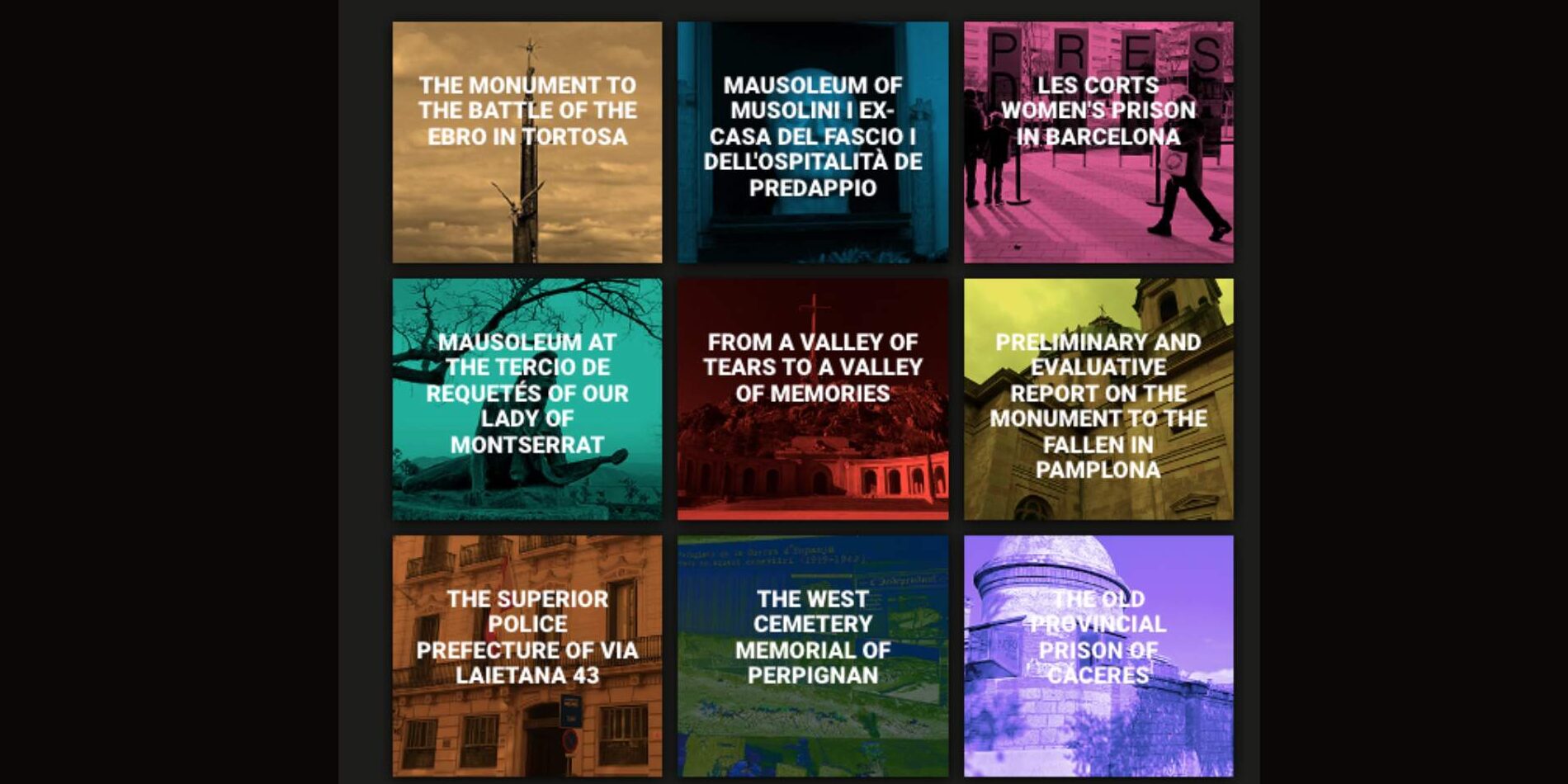One of the aspects that memorial legislation has tried to regularize over the last two decades is the relationship between citizenship and the collective spaces of remembrance. The multiple meanings and features of these spaces are subject to changing processes that reveal political struggles for cultural hegemony: which memory should prevail over the others?
The project “Patrimonios – Uncomfortable Memories. Dissonant Heritage” delves into the comparative study of mausoleums, spaces of mourning, and sites of repression across Europe. It seeks to foster a critical understanding of how memory is constructed, contested, and preserved in these complex heritage sites through research and actionable proposals.
To enhance accessibility, the website features Google Translate integration, enabling visitors to explore resources in multiple languages.
Currently, the project focuses on analyzing and providing resources related to the following heritage cases:
- The monument to the Battle of the Ebro in Tortosa
- The mausoleum of the Brotherhood of the Tercio de Requetés of the Virgin of Montserrat
- The mausoleum of Mussolini in Predappio
- The monument dedicated to the women’s prison of Les Corts in Barcelona
- The police headquarters of Via Laietana (added in 2024)
- The old provincial prison of Cáceres (added in 2024)
- The western cemetery of Perpignan (added in 2024)
- The Valley of the Fallen – Cuelgamuros (added in 2024)
- The Monument to the “Fallen” in Pamplona (added in 2024)
Background
The European continent is full of examples of uncomfortable heritage that move between contemplative pilgrimage, commemoration, and tourism. However, doubts arise about their role in today’s society based on the weight that citizens have had (or have) in the process of creating these spaces and the counterpoint that this represents to the political leadership of the State in all its variants. The transversality of these approaches requires comparative studies that distinguish common patterns and particular idiosyncrasies between different cases that affect Spain and Europe.
The mini-site Uncomfortable Heritage (Patrimonios Incómodos) is a proposal by the European Observatory of Memories of the Solidarity Foundation of the University of Barcelona that proposes as a work axis the comparative study of certain mausoleums, spaces of mourning and repression, distributed throughout Europe, sites of public commemoration and pilgrimage, their process of conversion into places of memory and the analysis of how the growing cultural tourism affects them.
The content is complemented by short audiovisual pieces with interviews with people linked to these spaces.

